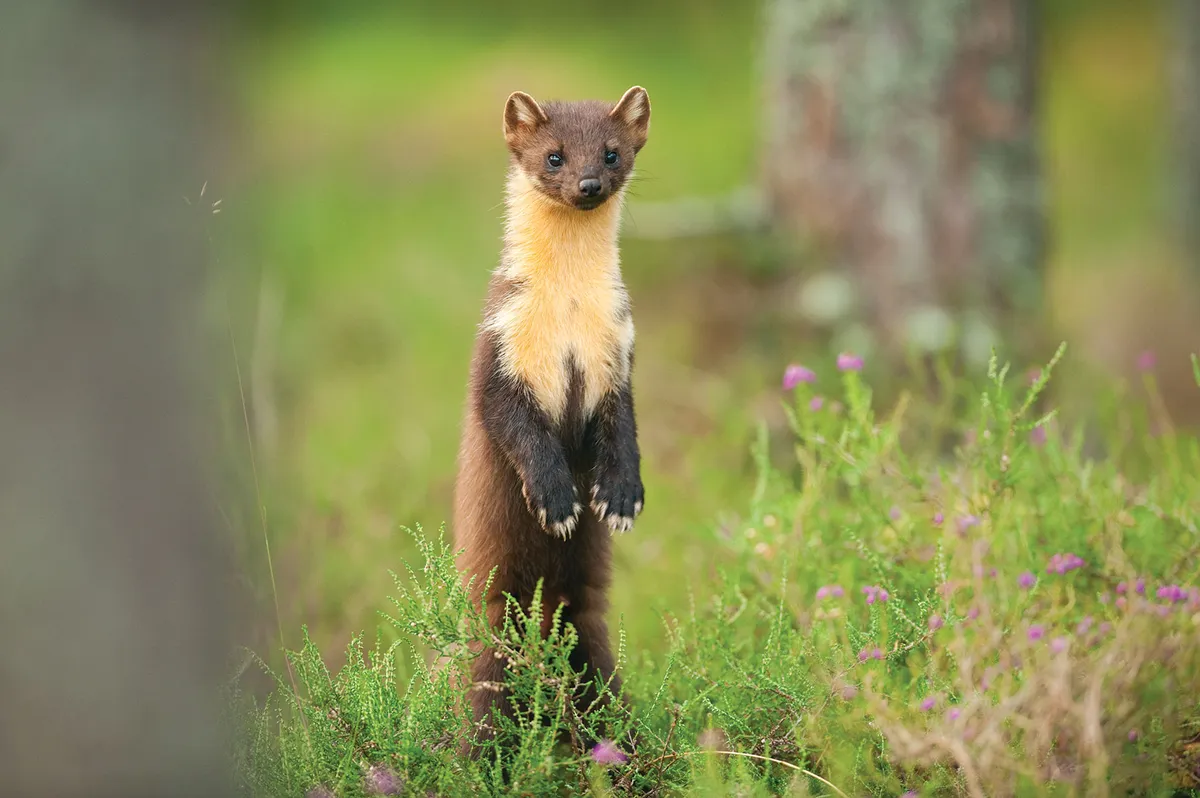The grey squirrel is an alien species, introduced to the UK in the late 19th century from North America. Over the years, it has outcompeted the native red squirrel, causing the population of reds to crash from around 3.5 million to between 120,000 to 160,000 individuals. In contrast, there are thought to be around 2.7 million grey squirrels across the UK.
The red squirrel has suffered at the paws of its grey cousin, because the larger greys feed on similar resources and they are carriers of squirrel pox, which is often fatal to reds but not to greys. (A vaccine has been proposed to combat the virus in red squirrels.)
With current techniques failing to gain the upper hand on grey squirrels, a combination of so-called ‘gene editing’ and ‘gene drives’ has been proposed as a way to suppress grey populations.

How are grey squirrels controlled?
Currently, poisoning or trapping and shooting are used to control grey squirrel numbers. But conservationists are looking at more humane ways of suppressing populations.
Pine martens are mustelids (from the same family as weasels, ferrets, otters and badgers) which live in woodland habitats, mostly in the north of the UK — particularly Scotland. Research has shown that the more pine martens there are in an area of woodland, the less grey squirrels, but the more reds.
Red squirrels are smaller, lighter creatures, so it’s thought they escape predation by perching on thinner branches which can’t support the weight of pine martens. But there are concerns about the potential negative impacts from pine martens on other species, such as wild birds.

An oral contraception has been proposed as another way to control grey squirrel numbers in other habitats. The government-backed plan would be to lure greys into species-specific feeding boxes. The Environment Minister Lord Goldsmith claims invasive species wreak £1.8 billion damage a year on UK woodlands. Grey squirrels alone cost the UK economy around £40 million a year, due to the damage they inflict on broad-leaved forests.
Scientists can use the powerful gene editing technique CRISPR-Cas9 to target a specific gene and make very precise changes to the DNA of plants or animals. CRISPRs are specialised stretches of DNA, while Cas9 is an enzyme that acts a bit like a pair of molecular scissors, cutting up strands of DNA. Using this technique, scientists can remove an unwanted gene or insert a new one.
Since it was developed by scientists 9 years ago, research into uses of CRISPR-Cas9 has been increasing in medicine and agriculture, as well as entering the fields of public health and environmental conservation, where genetic engineering had previously not been a realistic possibility.
What is a gene drive?
A gene drive is a technique that forces genes to spread through a population at higher than normal rates of inheritance. After CRISPR-Cas9 gene editing has been used to change the DNA, the modified gene is then used as a template to make copies of it. When the gene-drive animal mates with its wild counterpart, all the CRISPR-Cas9 editing tools and the trait get copied across. So the modified gene gets inherited by all future offspring, as opposed to 50% of them under the rules of standard inheritance.
Scientists have looked at using gene drives to improve public health, such as targeting malaria by increasing the ratio of male mosquitoes in a population (only the females bite and transmit the disease).
So far, no gene-drive animal has been released into the wild for conservation purposes. But scientists around the world are researching the possibilities. In the US, scientists at Stanford are using CRISPR-Cas9 to discover more about how the coral genome works and find the genes responsible for heat tolerance.
Here in the UK, scientists at The Roslin Institute in Edinburgh are modelling a gene drive for grey squirrels to create populations that are either predominantly male or female.
The conservation conundrum
Gene editing and gene drives offer the ability to ‘bend the rules’ of natural selection and control populations of invasive species or help other species adapt to changing temperatures. It seems these techniques could revolutionise environmental conservation. But should we use these tools to edit nature and help save our planet’s biodiversity? If so, how should it be regulated?
Anti-GMO organisations, such as GeneWatch UK, feel very strongly that no genetically modified organism (GMO) should ever be released into the wild, and that ongoing research into gene editing and gene drives is diverting money away from other conservation efforts.
Crucially, regulatory reform and public consultation need to be part of the conservation conversation.
Listen to Costing the Earth: Gene Editing Nature, which airs on BBC Radio 4 on Tuesday 6th April at 3:30pm and Wednesday 7th April at 9pm. Or catch up on BBC Sounds.
